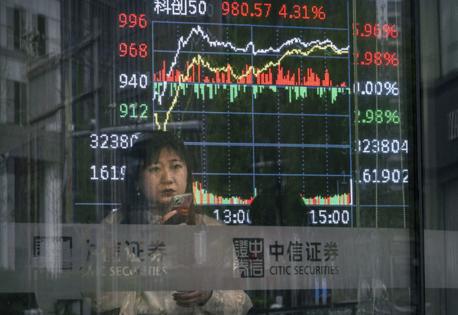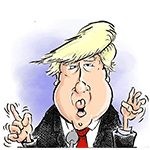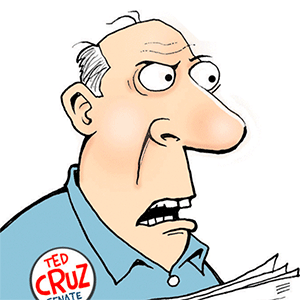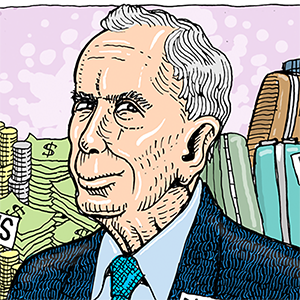Trump puts 90-day pause on higher tariffs, but hikes China rates
Published in News & Features
WASHINGTON — President Donald Trump announced a 90-day pause on higher tariffs that hit dozens of trade partners after midnight, while raising duties on China to 125%.
The president’s about-face came roughly 13 hours after high duties on 56 nations and the European Union took effect, fueling market turmoil and stoking recession fears. Trump faced massive pressure from business leaders and investors to reverse course.
“I thought that people were jumping a little bit out of line,” Trump told reporters at the White House on Wednesday when asked why he backed off. “They were getting a little bit yippy, a little bit afraid.”
Stocks staged their best rally since 2008 as euphoria gripped markets after Trump’s abrupt announcement. The S&P 500 Index soared 9.5%, rebounding from bear-market territory. The tech-heavy Nasdaq 100 surged 12%. Goldman Sachs Group Inc. economists rescinded their forecast for a U.S. recession.
“We’re having a good day in the stock market, as you can see, all-time, record day and hopefully it continues,” the president said later in the Oval Office.
U.S. Treasuries staged a tentative return to normalcy. Two-year yields briefly spiked past 4% as traders pared expectations for Federal Reserve rate cuts this year. A pullback from Treasuries had sent longer-term yields soaring before Trump’s announcement and the president said he was looking at bond markets as he made his tariff decision.
“The bond market is very tricky,” Trump said. “I was watching it. But if you look at it now, it’s beautiful — the bond market right now. But I saw last night where people were getting a little queasy.”
Investors and observers will now shift attention to China and whether the country will also increase its tariffs or signal any openness to negotiation. Trump said he didn’t think he’d have to raise the rate higher to force talks.
“I can’t imagine it,” Trump said. “I don’t think we’ll have to do it more.”
Trump said he thought about paring back his tariffs “over the last few days” in discussions with Treasury Secretary Scott Bessent and Commerce Secretary Howard Lutnick, and the decision “probably came together early this morning.”
“We didn’t have access to lawyers. We wrote it up from our hearts,” Trump said.
Countries that were hit with the higher, reciprocal duties that went into effect Wednesday will now be taxed at the earlier 10% baseline rate applied to other nations, with the exception of China, according to a White House official.
U.S. tariffs on steel, aluminum and automobiles remain at their current rates, the official said. Tariffs of 10% or 25% on Canadian and Mexico goods, with the exception items covered by the North American trade pact, will also stay the same, the official said. EU imports face a 10% tax even though the bloc announced retaliation on the metals tariffs, because the EU measures have not yet been implemented, according to the official.
Trump reiterated later Wednesday he intends to move forward with other tariffs on sectors including drugs, saying, “we’re going to put tariffs on the pharmaceutical companies, and they’re going to all want to come back.”
Trump announced his decision on social media around 1:18 p.m. Eastern time on Wednesday, saying that more than 75 countries had contacted his administration to negotiate on trade barriers and “have not, at my strong suggestion, retaliated in any way, shape, or form.”
“I have authorized a 90 day PAUSE, and a substantially lowered Reciprocal Tariff during this period, of 10%, also effective immediately,” Trump said.
The president also said he is “going to take a look at” tariff exemptions for some U.S. companies and will decide “on instinct.”
“Some companies, through no fault of their own, happen to be in an industry that’s more affected. You have to be able to show a little flexibility, and I’m able to do that,” Trump said.
Trump’s decision to raise import taxes even further on China came after Beijing announced plans to retaliate with an 84% duty on American goods set to begin Thursday. The Trump administration has taken particular aim at China over its trade practices and its combative approach to the president’s tariff plans.
“Based on the lack of respect that China has shown to the World’s Markets, I am hereby raising the Tariff charged to China by the United States of America to 125%, effective immediately,” Trump said in a social media post.
The president later Wednesday predicted Chinese President Xi Jinping or his team would come to the table for negotiations despite their defiant posture.
“We’ll get a phone call at some point, and it’ll be off to the races,” Trump said. “It’ll be a great thing for them. It’ll be a great thing for us. It’s going to be a great thing for the world and for humanity.”
Trump cast his sweeping tariffs as a powerful tool to revive domestic manufacturing and grow the U.S. economy, promising new factories and jobs in America. Yet the rapid shift in strategy raises questions about whether that remains the president’s goal and how he plans to achieve it.
Bessent on Wednesday couched the turnabout as a victory for Trump, telling reporters the president “created maximum negotiating leverage for himself” in talks with other nations. He said he would be speaking to officials from Vietnam, Japan, India and South Korea in the coming days.
“It took great courage for him to stay the course until this moment,” Bessent said at the White House. “This was his strategy all along.”
Billionaire investor Bill Ackman, a recent convert to Trump’s cause, on Sunday called for a three-month “time out” from the higher rates, which he warned could result in a “self-induced, economic nuclear winter.”
“By placing massive and disproportionate tariffs on our friends and our enemies alike and thereby launching a global economic war against the whole world at once, we are in the process of destroying confidence in our country as a trading partner, as a place to do business, and as a market to invest capital,” Ackman said.
Trump and his allies for days ahead of his announcement denied they were considering a blanket pause before the reciprocal tariffs were implemented. Top White House economic adviser Kevin Hassett was asked about the possibility Monday during an interview with Fox News, and deferred to “what the president is going to decide.” But when social media posts suggesting Trump was considering such a pause drove a market rally, the White House decried the reports — which erroneously cited Hassett — as “fake news.”
“MY POLICIES WILL NEVER CHANGE,” Trump insisted in a social media post last Friday.
Bessent said the president’s decision “signals that President Trump cares about trade and that we want to negotiate in good faith” and described the previously announced reciprocal duties as the “maximum level” for U.S. tariffs.
Hours before announcing the pause, Trump urged investors on social media to “BE COOL,” saying “THIS IS A GREAT TIME TO BUY” and predicted “everything is going to work out well.”
U.S. Trade Representative Jamieson Greer, testifying before a House panel when news of Trump’s announcement hit, told lawmakers he was aware that a pause was under discussion minutes beforehand.
Democratic Rep. Steven Horsford berated Greer, saying the president’s maneuver was “market manipulation” to benefit billionaire investors.
“Who is in charge? Because it sure doesn’t look like the trade representative,” the Nevada lawmaker said. “You just got the rug pulled out from under you.”
Greer denied that the president was manipulating markets.
“It is the responsibility of the President of the United States to reassure the markets and Americans about their economic security in the face of nonstop media fearmongering. Instead of grasping at straws to try landing a punch on President Trump, Democrats should focus on working with the administration to restore American Greatness,” White House spokesman Kush Desai said in a statement.
_____
(With assistance from Alicia Diaz and Laura Davison.)
©2025 Bloomberg L.P. Visit bloomberg.com. Distributed by Tribune Content Agency, LLC.










Comments